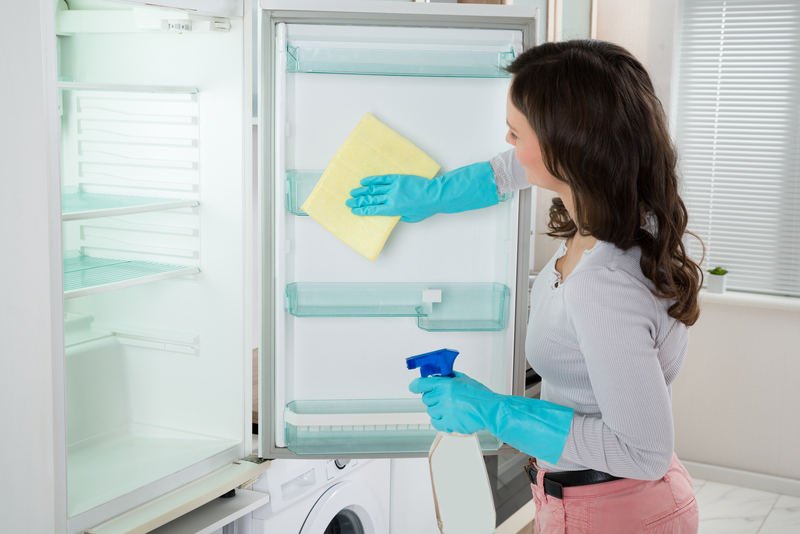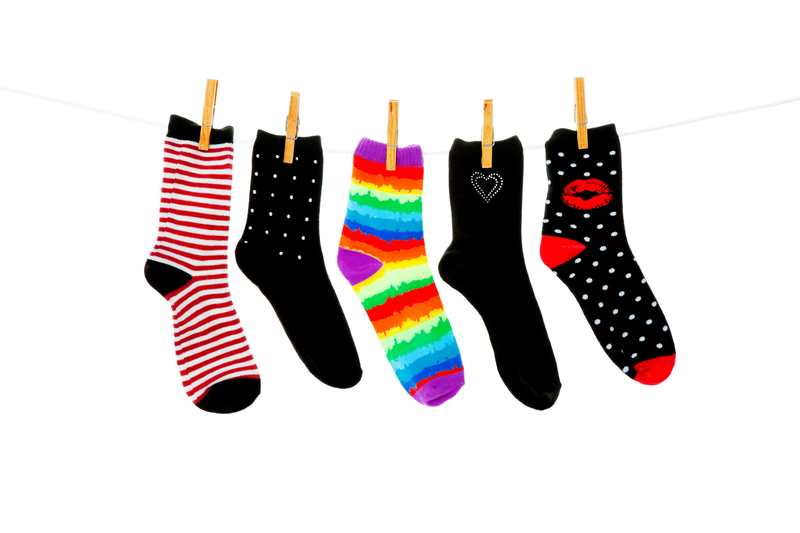Bringing Luster Back: A Grease-Free Approach to Enamel Oven Tray Care
Posted on 20/05/2025
Bringing Luster Back: A Grease-Free Approach to Enamel Oven Tray Care
Enamel oven trays are kitchen workhorses, enduring everything from sizzling roasts to bubbling casseroles. While their glossy finish looks stunning when new, frequent use can leave these trays marred by persistent grease, baked-on food, and unsightly stains. The good news? With the right enamel oven tray care techniques, you can restore their beautiful sheen and maintain a grease-free surface for years to come. In this comprehensive guide, we'll explore expert tips and natural methods for cleaning and caring for your enamel oven trays--without relying on harsh chemicals.
Understanding Enamel Oven Trays
Before diving into the grease-free cleaning methods, it's helpful to understand what makes enamel oven trays special. These trays, typically made from metal coated with a layer of vitreous enamel, offer:
- High heat resistance
- Non-reactivity to acids and food stains
- A naturally non-stick surface (when clean)
- Stunning luster and shine
However, even with these advantages, grease and carbonized food residue can dull the shine and affect performance over time. The secret to longevity and brilliance is in proper, grease-free enamel tray maintenance.

Why Traditional Cleaning Methods Fall Short
Many people instinctively reach for abrasive pads or chemical cleaners when they spot baked-on grease. While these can sometimes work, they often lead to problems such as:
- Scratches that dull the enamel finish
- Worn enamel that becomes prone to sticking and further staining
- Lingering chemical residues that can transfer to food
To safeguard your tray's luster and your family's health, it's worth embracing grease-free, non-abrasive cleaning techniques that are as effective as they are gentle.
The Grease-Free Approach to Enamel Oven Tray Cleaning
Step 1: Soak--The Foundation of Effective Cleaning
Never underestimate the power of a good soak. Fill your sink with hot water and add a generous squirt of dish soap. Submerge your enamel tray and let it soak for at least 30 minutes or, for stubborn stains, overnight. The hot, soapy water acts to soften baked-on residue and breaks down grease without harsh scrubbing.
Step 2: Natural De-Greasers--Baking Soda and Vinegar
Many commercial degreasers are packed with chemicals. Instead, baking soda and vinegar offer an effective, eco-friendly alternative:
- Sprinkle a thick layer of baking soda over the tray's surface after soaking.
- Spray or drizzle white vinegar onto the baking soda. The mixture will fizz, loosening grime and grease.
- Let it sit for 10-20 minutes.
- Gently wipe with a non-abrasive sponge, focusing on stained areas. Most grease should lift off easily.
Step 3: Steam Cleaning for Deep Stains
If you're dealing with persistent, baked-on residue, steam can be a game-changer for grease-free enamel bakeware care.
- Place the empty enamel tray in your oven.
- Fill a separate heat-proof dish with water and a few tablespoons of vinegar.
- Heat the oven to 180?C (350?F) for 25 minutes. As the water steams, it loosens grime from the tray surface.
- Once cool, wipe away residue with a soft sponge.
Step 4: Lemon Power--Nature's Degreaser
Lemons are natural degreasers, making them perfect for restoring luster to enamel oven trays:
- Rub half a lemon directly on stubborn grease spots.
- Let the juice sit for 10 minutes, then wipe with a damp cloth.
- This technique leaves your tray not only gleaming but also pleasantly fresh-smelling.
Step 5: Tackle Tough, Burnt-On Messes
For truly stubborn, burnt-on messes, create a cleaning paste with baking soda and a little water or hydrogen peroxide. Apply the paste, let it sit for up to an hour, then gently scrub with a microfiber cloth or soft sponge. Repeat as necessary--patience pays off without risking damage.
Best Practices for Ongoing Enamel Oven Tray Maintenance
Quick Tips to Keep Trays Luminous and Grease-Free
- Act Quickly: The sooner you clean spills and splatters, the easier they are to remove.
- Line your tray with parchment paper or a silicone mat to prevent baked-on messes.
- Never use steel wool, metal brushes, or harsh abrasives. These can scratch and permanently dull the enamel finish.
- Hand wash whenever possible. Even if your tray is labeled "dishwasher safe," repeated high temperatures and detergents can accelerate enamel wear.
- Dry thoroughly to prevent water spots or rust on exposed metal edges.
What to Avoid in Enamel Tray Care
- Do not use bleach or oven cleaners--these can etch the enamel and leave toxic residues.
- Never soak enamelware with exposed metal rims or chips for extended periods to avoid rust.
- Avoid thermal shock: Don't place hot trays in cold water or vice versa, as this can crack the enamel.
Preventing Stains and Build-up for Lasting Shine
Prevention is always easier than cure. Some simple tactics can preserve that elusive, high-gloss finish:
- Use a small amount of oil to lightly grease the tray before baking, but don't overdo it. This helps with food release and prevents stubborn stains without creating an oily residue.
- Remove roasted or baked items promptly to prevent residue from setting and bonding to the enamel.
- Allow the tray to cool slightly, but not completely, before washing--warm water helps dissolve grease more easily.
- If storing trays stacked, place a soft cloth or towel between trays to prevent scratches.
Restoring Lost Luster: Advanced Tips
Polishing With Natural Ingredients
After cleaning, you can further enhance the sheen of your enamel oven tray for a new look. Buff with a soft cloth and a few drops of mineral oil or coconut oil--just make sure to wipe off excess before storing. This adds a subtle, food-safe glow without attracting dust or grime.
Addressing Chips and Damage
If your tray has small chips or cracks in the enamel, avoid using it for acidic foods, as these can react with the exposed metal. For large chips, consider designating the tray for non-food uses or recycle responsibly.

Frequently Asked Questions
Can I use a dishwasher for my enamel oven tray?
While many enamel trays are labeled dishwasher-safe, hand washing is gentler and will extend the shiny finish. If you must use a dishwasher, avoid high-heat drying cycles and use a gentle detergent.
Why does my tray still feel greasy after washing?
Grease trapped in micro-scratches or residue left from detergents may linger. Use the baking soda and vinegar method to cut through stubborn residues, then rinse thoroughly with hot water.
How do I remove rust from the edges?
Rust usually forms only where enamel has chipped, exposing metal. Lightly scrub with a paste of baking soda and water, dry thoroughly, and avoid prolonged soaking. For severe rust, consider professional restoration or replacement.
Is it safe to use enamel trays with chips?
Small chips are generally safe as long as food doesn't come into prolonged contact with exposed metal, especially with acidic dishes. For more extensive damage, it's better to retire the tray from food use to ensure safety.
Summing Up: The Secrets to Grease-Free Enamel Tray Care
Shiny enamel oven trays are more than just a kitchen accessory--they reflect your care in the kitchen. By following the practical, grease-free cleaning routines outlined above, you can restore and sustain their brilliant luster, enjoying non-stick, spotless trays for countless baking adventures.
- Soak, don't scrub harshly--let time and gentle agents do the work
- Embrace natural degreasers like baking soda, vinegar, and lemon
- Dry and store properly to prevent damage and loss of shine
- Avoid harsh chemicals and abrasives at all costs
- Polish occasionally for that "brand new" sparkle
With these tips, bringing luster back to your enamel oven trays is not only possible but easy, safe, and environmentally friendly. Say goodbye to stubborn grease and dull surfaces, and embrace sparkling clean trays that are always ready for your next culinary masterpiece!





